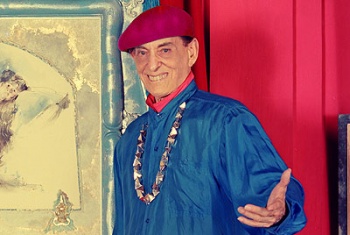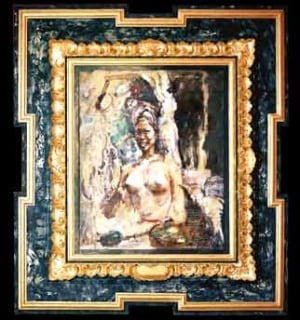Antonio Maria Blanco
- Full Name
- Antonio Maria Blanco
- Pen Name
- Sang Maestro
- Photograph by
- Link to Photograph
- http://www.blancomuseum.com/
- Website for biography
- Place
- Related Music
- Related Books
- Related Scholars Articles
Biography
In English
Living in serene surroundings with his four children, Tjempaka, Mario, Orchid and Maha Devi, Bali became Blanco's center. He was fascinated by the island and completely captivated by its charm.
Blanco lived and worked in his magical hilltop home until his death in 1999, feverishly creating his fantasy portraits of beautiful women. Surrounded by lush gardens, rice fields and with a Banyan tree standing over his family's temple, Antonio Blanco proceeded to create a new reality for himself. His artistic outpourings of this isolated world became much sought after by eager art lovers, collectors and promoters. Within a few years, Blanco became the most famous foreign artist to make Bali his home. He was recognized in both Indonesia and abroad, receiving numerous Blanco Awards and commanding huge prizes at international auctions.
By the end of his life, Blanco had begun building his museum at his studio in Campuan. Dramatically, he died just before its inauguration. His funeral was marked by a very important Blanco Cremationin Ubud. It was Blanco's dream to turn his studio-mansion into a museum. His son, Mario, fulfilled this dream by following his path to become a painter. The Blanco Renaissance Museum is now open to the public, exposing both the maestro's and Mario's art works.In Balinese
In Indonesian
Hidup di rumah asri dengan pemandangan indah bersama empat anak mereka, Tjempaka, Mario, Orchid dan Maha Devi, Bali menjadi inti dari Blanco. Ia amat mengagumi pulau ini dan terperangkap oleh kharismanya.
Blanco hidup dan berkarya di rumah atas bukitnya hingga ia meninggal pada tahun 1999, menuangkan berbagai lukisan fantasi wanita cantik pada kanvas. Dikelilingi kebun bersemi, sawah dan pohon beringin merindangi pura keluarganya, Antonia blanco menciptakan realita baru untuk dirinya. Tuangan artistiknya didalam lingkungannya yang terisolir tersebut membuahkan karya-karya yang sangat dicari dan dihargai oleh pecinta seni, kolektor, dan promotor. Dalam waktu beberapa tahun, Blanco menjadi artis asing paling terkenal yang bertempat tinggal di Bali. Ia dikenal tidak hanya di Indonesia tapi juga seluruh dunia, mendapat berbagai pernghargaan, dan lukisannya dibeli dengan harga tinggi pada lelang-lelang internasional.
Mendekati akhir hidupnya, Blanco mulai mendirikan museum lukisan di studio seninya di Campuan. Kematiannya dramatis tidak lama sebelum pembukaan museumnya. Upacara kremasi ngaben yang cukup besar menandai kepergian beliau. Anak Blanco, Mario, memenuhi mimpi Blanco membuka museum dan melajutkan darah pelukisnya melanjutkan jejak kaki Sang Maestro. Museum Renaissance Blanco kini dibuka untuk umum, menampilkan karya-karya Sang Maestro dan Mario.







Enable comment auto-refresher